More Employee Clubs: Nuts, Bolts, Aviators and It’s Later Than You Think
We know that Johnson & Johnson employees had The Laurel Club, an organization for women employees formed in 1907 whose members started the tradition of Johnson & Johnson employees exercising at work and volunteering in the community. And employees formed a very popular Glee Club, which performed on the radio and sang with a movie star. But they also formed a wide variety of other clubs, too, and in the 1940s through 1960s, if there was an interest among Johnson & Johnson Family of Companies employees, there was probably an employee club to go with it.
The Nut & Bolt Club, one of the largest of the employee clubs, was formed in 1936 as the result of a softball game. (Unfortunately, our archives don’t go into more detail about that story!) Its members worked in the Mechanical Department, which oversaw the Company’s manufacturing machinery and campus maintenance. Although it was formed mainly for social activities, the Nut & Bolt Club members volunteered their time for a variety of efforts in the community and at Johnson & Johnson. One of the Nut & Bolt Club volunteer efforts, a plant safety program, was so successful at reducing workplace injuries that it became a model for later programs.
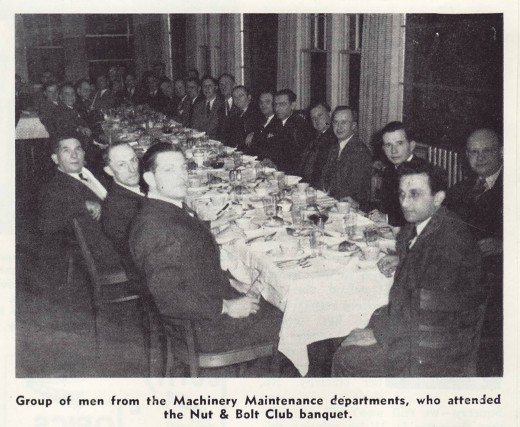
The employee club with perhaps the best club name in our history was the It’s Later Than You Think Club, which was formed circa 1953-1954. This club was for single employees of all ages, and it provided an opportunity for members to socialize. The philosophy behind the name was that members shouldn’t wait until later to try new things. As the December 1953 – January, 1954 edition of the Johnson & Johnson Bulletin put it, “the club will provide a medium for people of all ages at J&J to meet and have fun at friendly gatherings.” The March, 1954 Bulletin mentioned that the announcement of the club’s formation generated an “avalanche” of new members, and that they planned to elect officers and plan theater groups and other outings.
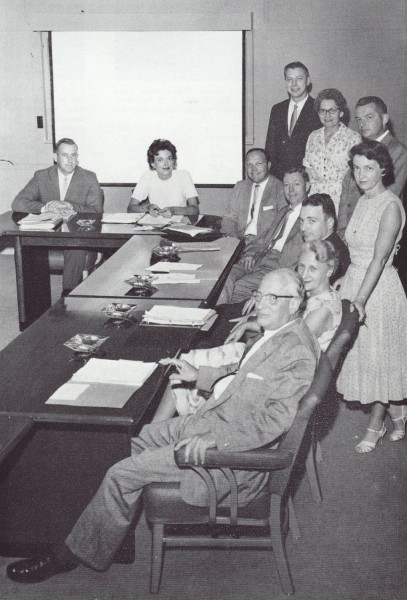
Investment clubs were popular in the 1950s. So Johnson & Johnson and operating company employees interested in learning about finance and investing formed a number of investment clubs (there was one specifically for engineers). The club members researched the stock market and picked stocks to invest in by popular vote. Employee investment clubs at Johnson & Johnson include the Exchangers (named after the Stock Exchange), the F&F Investment Club, the Engineers Investment Club, the North Brunswick Investment Club and the Raritan Valley Investment Club. There was a lively debate in the Bulletin, the Company newsletter at the time, between investment club members and “go-it-aloners” – employees who invested on their own and didn’t want to join the clubs.
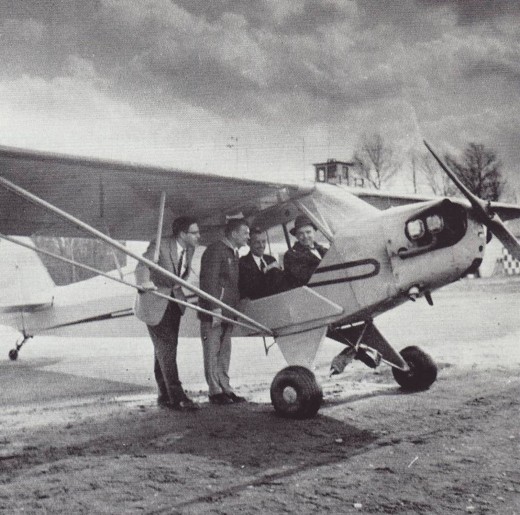
For really adventurous employees in the 1950s, there was the Blue Sky, Inc. club. That was a club open to corporate and operating company employees who were interested in learning to fly small planes. The club was headquartered at Solberg Airport near Somerville, New Jersey and in 1959, members included about 36 employees from Johnson & Johnson and nine from Ethicon, Inc. Three of the 1959 members were women, including two of the Ethicon employees.
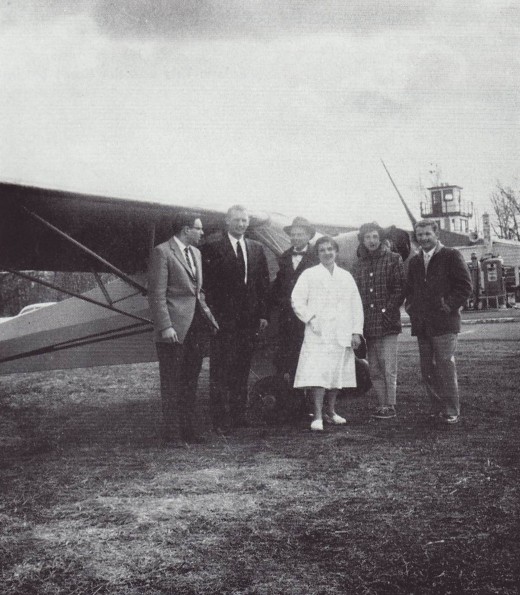
The club members actually owned their own yellow two-seater Piper Cub airplane (which they chipped in and bought in 1958), and members took flying lessons with professional pilots on the weekends. No doubt General Robert Wood Johnson, who was Chairman and CEO at that time, would have approved: he used to fly his own autogyro, and received the first private pilot’s license to fly one in the United States.
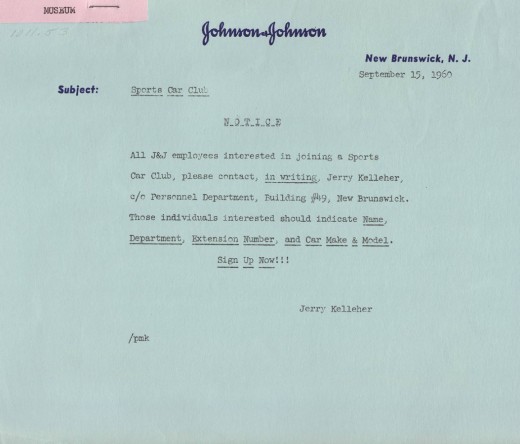
For employees who preferred club activities closer to the ground, 1960 saw a notice go up in New Brunswick asking any employees who were interested in joining a sports car club to contact the club organizer. The call for members was successful because, in 1961, the sports car club held its first gymkhana, which was billed as a skills competition for members. Activities included a garaging contest, a parking contest, serpentine driving, space estimating and figure 8 driving. Despite the use of sports cars, the contest activities, like parking, were probably done at a very slow speed.
Johnson & Johnson also had a chess club that met every Wednesday at 5:15 pm in New Brunswick, and was open to employees at all levels of skill with chess. And in a foreshadowing of our annual employee photography contest in New Brunswick, in 1962 a memo went out regarding the formation of an employee photography club to take pictures, develop them and show their work.
“Several J&J camera enthusiasts who do their own dark room work would like to form a small club with the idea of exchanging techniques and exhibiting their salon prints, say four times a season for criticism and honors.” [Memo from our archives, April 6, 1962]
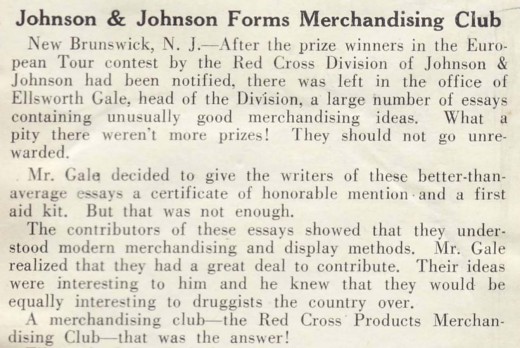
One of the most interesting Johnson & Johnson clubs in the early 1930s did not have any employee members. The Merchandising Club members were all consumers or retail pharmacists with an interest in Johnson & Johnson. The club was formed after a national essay contest generated an unusual amount of really good merchandising ideas. The employee in charge of the contest decided that, besides awarding all of the runners up with a certificate and a First Aid kit, he would start a club whose purpose would be the exchange of merchandising ideas among members. Members, drawn from the essay writers, would be able to come up with and share ideas about how to promote the Company’s products in retail pharmacies. They would also be able to vote on packaging ideas for new products…an early precursor to the focus groups and consumer insights used today.
The employee clubs at Johnson & Johnson and our operating companies were an opportunity for employees to get together around their shared interests, to learn new skills and hobbies, do community work and to get to know other employees across the Johnson & Johnson Family of Companies. They were a good way for employees to network, for younger employees to learn from employees with longer tenure, and for what we would probably today call mentoring opportunities. Today, the Company's affinity groups, though extremely different in their purpose and mission, provide some of those same opportunities for employees from a variety of operating companies and locations to get to know each other.

Excellent article!! I started my career at J&J in 1973, and I myself was a long-standing member of the J & J Tennis Club, until it disbanded. We had a ladder list which listed players, which were paired up to play each other during the year, which resulted in listing the players rankings, as they played throughout the year. I was the club secretary for a couple of years. I met many interesting employees from diverse positions within the company, and it was a lot of FUN!!
One of the men from the Machinery Maintenance department who is sitting at the table in the photo on page 1 looks a lot like my grandfather. He was a machinist at J&J in New Brunswick for many years and I've been told that he invented (or improved upon) a process used in the manufacture of Band Aids. For that he received royalties on a continuous basis- even after his death (sent to his wife). Is there any way that I can find out more about him (what he invented, how much were his royalties, other awards and information?) His name was Edward Witt. It's only for my own curiosity (and my family's). Thanks very much.
Mike Witt
In reply to by Michael Witt
Michael,
Thanks for sharing that story about your grandfather and his work at Johnson & Johnson. How great that he is (likely) in one of the photos in this post! We don't have detailed employee records from that time in our archives and, since your grandfather's time as a machinist here, the Company is further decentralized. I will check with the folks in our consumer wound care business to see if they have any information they can share with you about his contribution to the manufacture of BAND-AID® Brand Adhesive Bandages. If I find anything, I will let you know what I find via email.
Margaret
Very interesting article. What does the Past teaches us? fun ways to improve Team work, add fun to work by creating closer relationship among employees, add another dimension to our J&J comitment and dedication and retention if J&J is more than work and become a society we enjoy also after work (including after retiring ?) may-be we have reached the next era of florishing clubs?